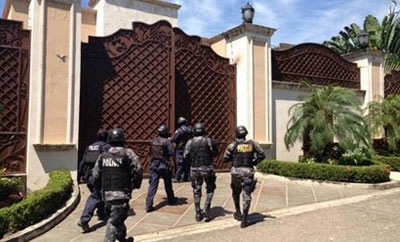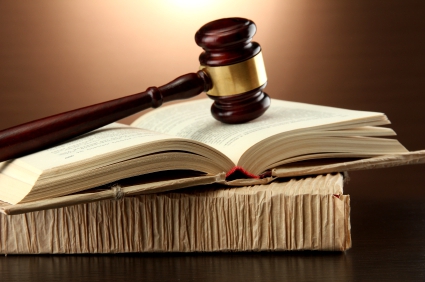The Russian criminal procedural law provides for certain investigative measures. So, in order to obtain the necessary evidence, employees of authorized bodies can interrogate, confront, seize, investigate, and seize property. Consider the latter procedure in more detail. 
General information
If there is evidence of damage to property, the investigator must take measures to ensure the execution of the claim in the case. One of the types of punishment is confiscation. As one of the measures for its implementation, seizure of property is used. Legislation formulated the objectives of this event. Among them should be highlighted:
- Determination directly of the property that may be seized, and determination of its total value.
- Provision of reimbursement of costs of a procedural nature.
- The implementation of the execution of the sentence in part of the claim.
- Securing the payment of a fine as a primary or additional punishment in accordance with a sentence.
- The implementation of the possible confiscation of real estate, cash and other valuables that are on the accounts, in deposits or deposited with a bank or credit institution, as well as securities or certificates acquired as a result of illegal actions or acquired in a criminal way.
Definition
The seizure of property acts as a specific measure of procedural coercion. Its essence lies in the prohibition of the owner or owner to use or dispose of the object. The seizure of property also involves its seizure and transfer to the relevant authorities for storage. The content of this preventive and enforcement measure of coercion consists of actions aimed at preventing the concealment or alienation of an object. Thus, the execution of the sentence is carried out in terms of pecuniary punishment. 
General grounds
The seizure of property of the debtor is possible in the following cases:
- The infliction of material or moral harm was established by unlawful action, and a lawsuit was filed about this.
- There is a real possibility of confiscating an object obtained as a result of a crime or acquired illegally.
- In the case there are costs that can actually be assigned to the violator.
The grounds for seizure are the well-founded assumption that failure to take this measure may create significant difficulties or make it impossible to enforce a court decision in terms of property recovery. In practice, the reason given is often inferred only from the fact that such a penalty could be applied in accordance with the sentence.
Legal base
Judicial seizure of property is carried out on the basis of a relevant decision. It is issued at the motivated request of the investigator. This application for the seizure of property must be agreed with the supervising prosecutor. According to Art. 115, part 1 of the Code of Criminal Procedure, the investigator or the interrogating officer shall issue a decision regarding the initiation of an application. The form of this decision is set out in Appendix 72 to Art. 467 of the Criminal Code.
The narrative sets out the grounds under which the seizure of property should be undertaken. The resolution fragment shall indicate the essence of the application, the location of the object or the name of the credit or banking organization and the number of the deposit or account. Without fail, F. I. O. is also indicated.citizen in respect of whom this measure is being taken. An application is considered solely by a judge of a military or district authority of the appropriate level within a period not exceeding 24 hours from the moment of its receipt at the location of the facility or the conduct of a preliminary investigation. After that, a decision is made. It indicates whether property has been seized. The decision may satisfy the requirements of the investigator or refuse to execute them. 
List of subjects
In Art. 115, parts 1 and 3 of the Criminal Code, a list of persons is presented whose property may be seized. These entities, in particular, include:
- Accused.
- Suspect.
- Persons liable for actions committed by the suspect (accused).
- Other persons owning property that is allegedly acquired illegally or obtained as a result of crime, as evidenced by certain evidence.
The following persons may be held liable:
- The employer of the suspect or accused.
- Financial institutions responsible for the conduct of officials.
- Owners of sources of increased danger.
- Legal representatives of partially competent persons and other categories.
In accordance with a civil lawsuit, all these entities act as defendants in the case. For partners in unlawful actions, the law establishes joint responsibility. In this regard, the seizure of property can be carried out in any proportions. However, the total cost should not exceed the estimated size of the penalty. In accordance with part 3 of the above article, the arrest of property held by third parties is provided if it is established that it was obtained as a result of unlawful actions of the suspect (accused). 
Important point
The presence in the prescriptions of the law of indications of persons who are liable for actions committed by the accused (suspect) is determined by the fact that in some cases the punishment is applied not to those who directly caused the harm, but to other citizens. This, in particular, refers to the parents (representatives) of minors (up to 14 years old), as well as minor children 14-18 years old in the absence of recent income or property that would be sufficient to compensate for the damage.
Liability for harm caused by a source of high danger is borne directly by its owner. Moreover, the owner is not always the accused (suspect). The obligation to compensate for the damage caused by a partially incompetent person who could not understand the consequences of their actions during their commission as a result of a mental disorder rests with the able-bodied relatives (relatives) living with him: spouse, adult children, parents. That is, those who knew about his illness, but did not raise a question about the recognition of his incompetence.
Implementation procedure
Execution of the seizure of property should be made in accordance with the general rules for the implementation of investigative measures. They are installed in Art. 164 of the Criminal Code. In accordance with the procedural regulation, optional and mandatory participants in the action are distinguished. The latter should include witnesses and the investigator. According to Art. 28, part 2, paragraph 4 of the Criminal Code, the investigator has the authority to issue written instructions to the bodies of inquiry that are binding.
Along with this, he can receive assistance in the implementation of necessary measures. On behalf of the investigator, thus, the inquiry body can also carry out the action. Enforcement of the decision is provided by bailiffs. The seizure of property is regulated in Articles 51 46, 45, 9 of the corresponding Federal Law. The law also establishes an inventory procedure.All actions that the bailiffs carry out: the seizure of property, the drawing up of a protocol, and others - are carried out as part of the decision to start enforcement proceedings. 
Cancellation of security for a claim
The release of property from the arrest prescribed in the instance of general jurisdiction is carried out in accordance with article 144 GK. Cancellation of security may be carried out at the request of the defendant or at the initiative of the body that issued the verdict. Removal of seizure from property by order of the arbitration is carried out at the request of the participant in the case. The authorized authority must immediately notify the fact of the cancellation of interim measures to the appropriate governing bodies (local, state) that register objects or their rights, encumber or restrict them, as well as terminate and transfer.
The issue of canceling interim measures shall be resolved within five days from the date of receipt of the relevant application within the framework of the court session. The procedure for considering applications in arbitration is regulated by Art. 93 agribusiness. In accordance with the results of the proceedings, an appropriate determination is made. Copies of it shall be sent to all persons who participated in the production no later than the next day from the date of its removal. Depending on the type of measures taken, documents are also sent to state and other bodies that register property or rights to it. 
Other cases
The cancellation of seizure of property in the framework of criminal proceedings is carried out in accordance with the decision, determination of the authority or official who is considering this case, if this measure is no longer necessary. This requirement is contained in Art. 115 Code of Criminal Procedure. In the event of a seizure of property by customs or tax authorities, the decision to cancel it is taken by authorized officials of these inspections. Directly the very decision on the restriction of the owner’s rights to the object is valid from the moment of its adoption until the day of adoption of the decision on its cancellation.
Additionally
In accordance with the Instruction for the Clerical Work of District Courts, which was approved by order of the Director General of the Judicial Department under the RF Armed Forces, copies of sentences, rulings, decisions, decisions for execution, and issued documents as part of enforcement proceedings are certified by the signatures of the presiding officer, secretary, and stamped. In some cases, there should also be a mark on the entry into force of the document. 
Event objectives
By analyzing the criminal procedural rules, as well as other legal acts that govern the seizure of property, you can follow a fairly clear procedure for implementing this measure. It provides a consistent solution to the tasks set as part of the clerical work. These include, in particular:
- Making a decision on the possibility and necessity of seizing property - establishing the factual basis.
- Determining the nature of the object, as well as the place where it is located.
- Establishment of the circle of persons whose property may be arrested.
- Determination of the total value of the object.
- Obtaining legal grounds for seizure.
- Establishing a specific time limit for the production of a procedural action.
- Drawing up a protocol on the imposition of property seizure.
- Determination of the content of encumbrances and prohibitions provided for in relation to the facility.
- Ensuring the safety of seized property, resolving the issue of moving the facility to its storage location.
Finally
As mentioned above, procedural actions can be applied in respect of objects belonging to the accused, suspect or persons who are liable for the material nature of their unlawful behavior. At the same time, the legislation does not allow the arrest of items that are necessary for the guilty person or his dependents.



